Chenopodium ficifolium, Fig-Leaf Goosefoot
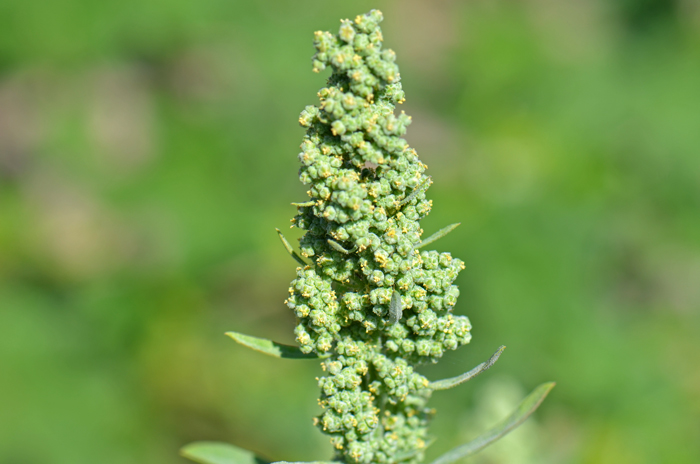
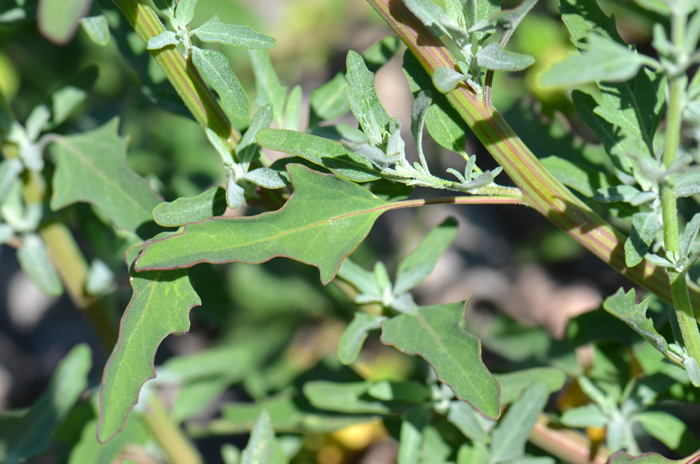
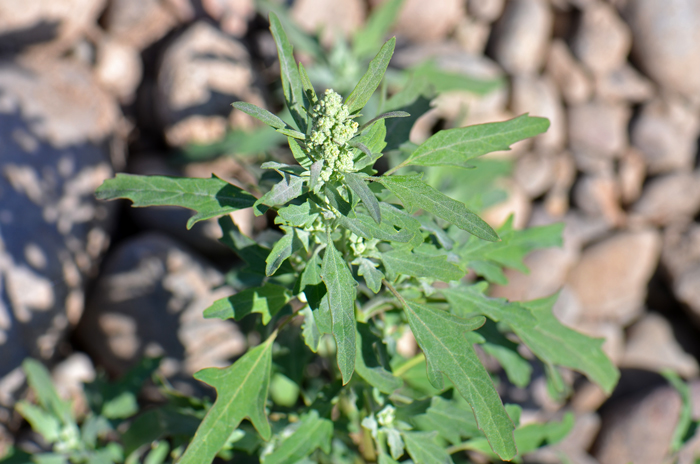
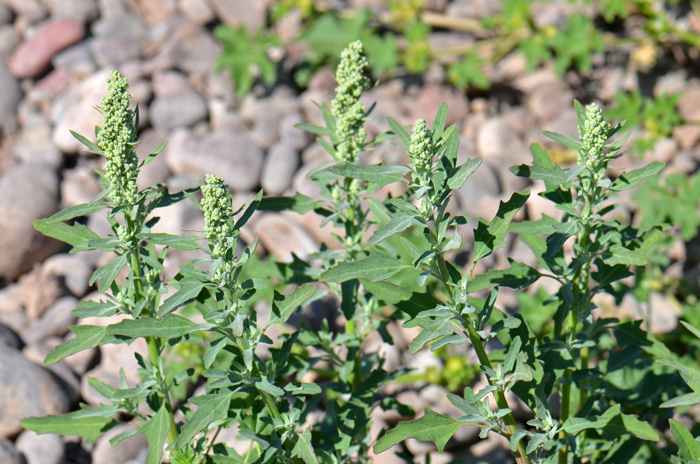
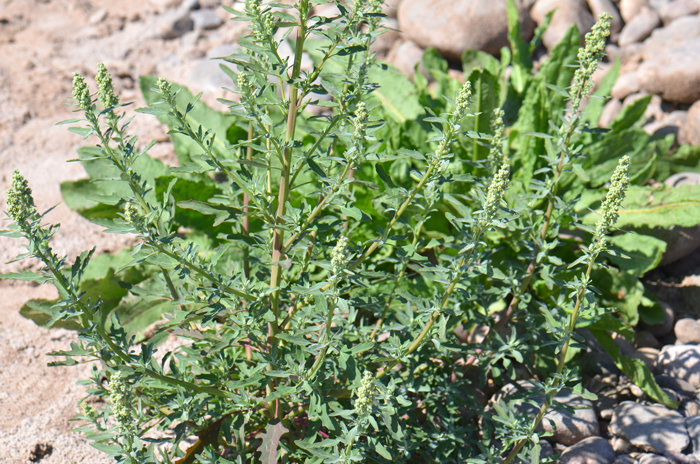
Scientific Name: Chenopodium ficifolium
Common Name: Fig-Leaf Goosefoot
Also Called: Figleaf Goosefoot, Fig-leaved Goosefoot, Fig-leaved Lamb's-quarters
Family: Chenopodiaceae, Goosefoot Family (now as sub-family Chenopodioideae in the Amaranthaceae Family).
Synonyms:Chenopodium serotinum
Status: Introduced from Europe.
Duration: Annual
Size: Up to 3 feet (.9 m)
Growth Form: Plants erect, stems angular and with greenish stripes, mostly smooth or glabrous or sparsely or covered with meal-like particles (farinose).
Leaves: Green; leaves alternate, leaf shape variable, ovate, triangular or elongate, mid-leaves 3 dentate lobes,, upper-leaves narrower, or with smooth edges; leaves typically with short (1 to 2 cm long) stems (petiolate); leaves non-aromatic.
Flower Color: Whitish-green; flowers with 5 tepals, flowering stalk a spike, form a panicle, flowers bisexual, wind pollinated; fruiting summer and fall.
Flowering Season: July to September
Elevation: Up to 1,000 feet (304 m)
Habitat Preferences: Prefers disturbed areas, alkaline soils but it will also thrive in rich, composted soils as with as soils with good drainage.
Recorded Range: Erratic distribution across the United States; AZ, FL, MO, PA and NY. Elsewhere in European, Middle East, Asian and northern African countries. It also grows in New Zealand and Australia.
North America & US County Distribution Map for Chenopodium ficifolium.
U.S. Weed Information: Unknown
Invasive/Noxious Weed Information: Unknown
Wetland Indicator: Unknown
Threatened/Endangered Information: Unknown
The genus Chenopodium was published in 1753 by Carl Linnaeus, (1707-1778).
In the Southwestern United States: Arizona has 30 species of Chenopodium, California has 47 species, Nevada has 32 species, New Mexico has 36 species, Texas has 38 species, Utah has 31 species. All data approximate and subject to revision.
Comments: Very little information available about specific characteristics of Chenopodium ficifolium in North America.In Southwest Desert Flora also see: Nettleleaf Goosefoot, Chenopodiastrum murale.
The species epithet “ficifolium” is from the Latin root “fici” meaning ficus or fig, a reference to the fig-like shape of the leaves.
The genus Chenopodium was published in 1753 by Carl Linnaeus, (1707-1778).

